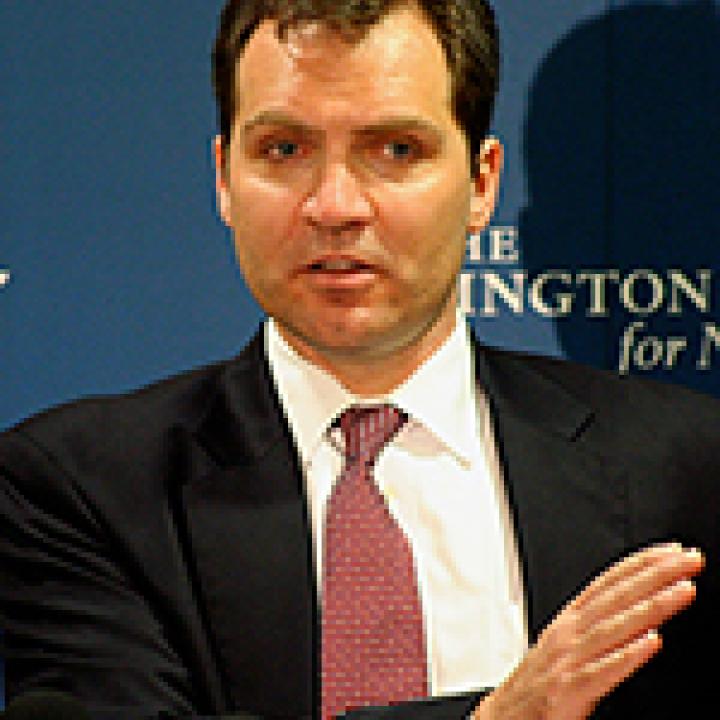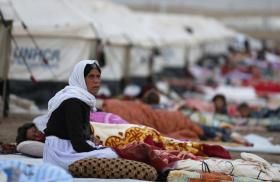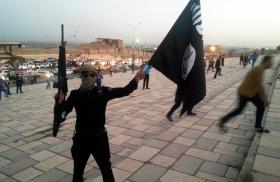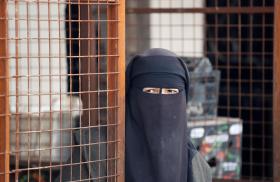
- Policy Analysis
- PolicyWatch 1542
Defending the City: NYPD's Counterterrorism Operations

Part of a series: Counterterrorism Lecture Series
or see Part 1: U.S. Efforts against Terrorism Financing: A View from the Private Sector
How has the NYPD established a global counterterorism capability?
On June 23, 2009, Richard Falkenrath, the New York Police Department's (NYPD) deputy commissioner for counterterrorism, addressed a special Policy Forum luncheon at The Washington Institute as part of an ongoing counterterrorism lecture series sponsored by the Stein Program on Counterterrorism and Intelligence. Dr. Falkenrath oversees the department's counterterrorism operations and training. The following is a rapporteur's summary of his remarks.
The NYPD has a highly developed counterterrorism program, due in large part to the strong support of city and department leaders such as Mayor Michael Bloomberg and Police Commissioner Raymond Kelly, who are both committed to having a strong counterterrorism program that effectively complements federal efforts. The NYPD is also by far the largest police department in the country. While most police departments have only a few hundred employees, the NYPD has 53,000 and an operating budget of $4 billion. In addition, the city currently has a very low crime rate. All of these factors make it relatively easy for the NYPD to devote significant resources to counterterrorism.
To say that the NYPD is filling in the gaps in federal counterterrorism efforts is not a criticism of the federal government, which is very good at acquiring information on individuals connected to overseas terrorist organizations. The NYPD, rather, has something the federal government lacks: plenary police power, which gives the department a broad ability to maintain public order, and a unique and important role in overall counterterrorism efforts.
The NYPD counterterrorism bureau comprises several main elements. First, a contingent of NYPD officers has been assigned to the FBI-led Joint Terrorism Task Force (JTTF), which is completely "marbled" into the FBI. Given the FBI's extraterritorial jurisdiction in terrorist cases, these detectives often end up conducting investigations overseas. NYPD detectives are assigned to the National Counterterrorism Center and the National JTTF as well.
The second element is the counterterrorism division, a collection of specialized programs that includes a section to counter weapons of mass destruction (WMD), which involves radiation detection and the BioWatch program; the critical infrastructure protection agency, which reviews new buildings and infrastructure to determine how to protect them from attack; the training section, which instructs members of the NYPD and other agencies on everything from how to handle a confidential informant to how to properly conduct a bag search; and the special projects unit, which handles specialized tools such as radiation detection equipment and vehicle interdiction devices.
The lower Manhattan security initiative, the third element, works with the private sector in novel ways to improve urban security. Working side by side with corporate stakeholders, this initiative utilizes police information, control over patrol resources, and state-of-the-art technology to ensure the safety of this area. The fourth major element, the counterterrorism coordinator, sets aside one radio car and two police officers from each precinct to act as a visible presence in areas likely to be surveilled by terrorists, and which can be immediately mobilized in the event of an attack or disaster. Finally, a cadre of civilian analysts provide intelligence and policy support to the NYPD leadership, including Commissioner Kelly and Deputy Commissioner David Cohen, the head of the intelligence bureau. A doctor on staff, an expert in infectious diseases, provides support for bioterrorism events, such as anthrax attacks and other similar incidents.
The foremost threat facing New York is international terrorism, particularly from al-Qaeda and its affiliates. Despite ongoing efforts, and a clear intent to attack the United States, al-Qaeda has not been able to strike the homeland in many years. The group that poses the next most serious threat is Hizballah, a group with a proven capability to carry out overseas attacks. So far, Hizballah's leadership has made the strategic decision not to attack the United States, but this could change if the U.S. military ever directly engages Hizballah or its Iranian sponsor. Regardless, the United States should not base its defense on the strategic decision of a terrorist organization.
Although the likelihood of a WMD attack is low, the acquisition of WMDs has become easier over the past decade. Al-Qaeda, for example, had an anthrax program in Afghanistan, and the required technical information for these types of programs can be readily obtained through the internet. Illustrating the NYPD's concern, the department monitors the city's air, as well as the air in the subway system, and has the most sophisticated radiation detection system in the world. The NYPD also works closely with the health department and is one of the few police departments that has its own HAZMAT units.
Homegrown terrorism is also a serious issue for the NYPD, made even more challenging by lack of information. The federal government has information about individuals connected to overseas organizations, but it is more difficult to prevent attacks by radicalized individuals who have no contact with anyone already known to be dangerous. So far, there have been no successful major attacks by homegrown terrorists in the United States, but the recent plot against two synagogues in Riverdale that was disrupted by the NYPD shows that the potential exists.
An important underlying question is what drives radicalization. The NYPD released a report two years ago detailing its own theories on the radicalization process, based on a number of case studies. Although the Riverdale case was consistent with its theory for the most part, the incident also revealed aspects of radicalization that need to be revisited. The "root causes" theory, which suggests that radicals are the product of experiences of certain socioeconomic groups, has been largely inadequate in describing and predicting who is likely to become radicalized. For this reason, it would be useful to have a psychological study of homegrown terrorists.
The NYPD takes steps to ensure that it balances its ability to prevent terrorist attacks with its duty to protect civil liberties. For instance, all of its investigations require predication: the intelligence bureau starts investigations based on leads, never by using a dragnet approach. Furthermore, unlike in England, officials or personnel working on counterterrorism or intelligence matters are not involved in community outreach. The NYPD's Community Affairs Bureau reports directly to the police commissioner, thus allowing the department to build relationships with various communities without making them feel like they are under suspicion.
Two issues in the federal government affect local counterterrorism efforts. First is the transition of accused terrorists from military tribunals to federal court trials. During the Bush administration, very few high profile cases were taken to court due to the preference for military tribunals, but the number has been increasing under President Obama. Although this is not necessarily a bad development, it does require JTTF counterterrorism investigators to direct resources away from prevention and toward supporting these cases. The Obama administration also needs to consider the potential consequences if the United States loses one of these cases and the defendant is released into the community.
The second issue affecting local counterterrorism is the lack of attention now being paid to grant funding for homeland security and counterterrorism. In the past several years, the competition for these funds has become fiercer, and the disbursement process has become ever more onerous. In addition, funds are being shifted from prevention to preparedness programs. Although it is important to be prepared to respond to a terrorist attack, the United States should not erode its ability to prevent these attacks in the first place.
As reflected by intelligence and detainee reporting, New York remains at the top of terrorist target lists, both for symbolic reasons and in terms of the physical consequences of a successful attack. New York, unfortunately, holds a special place in the extremist mindset. In a way, it is a function of the city's greatness.
This rapporteur's summary was prepared by Lauren Cohen.





